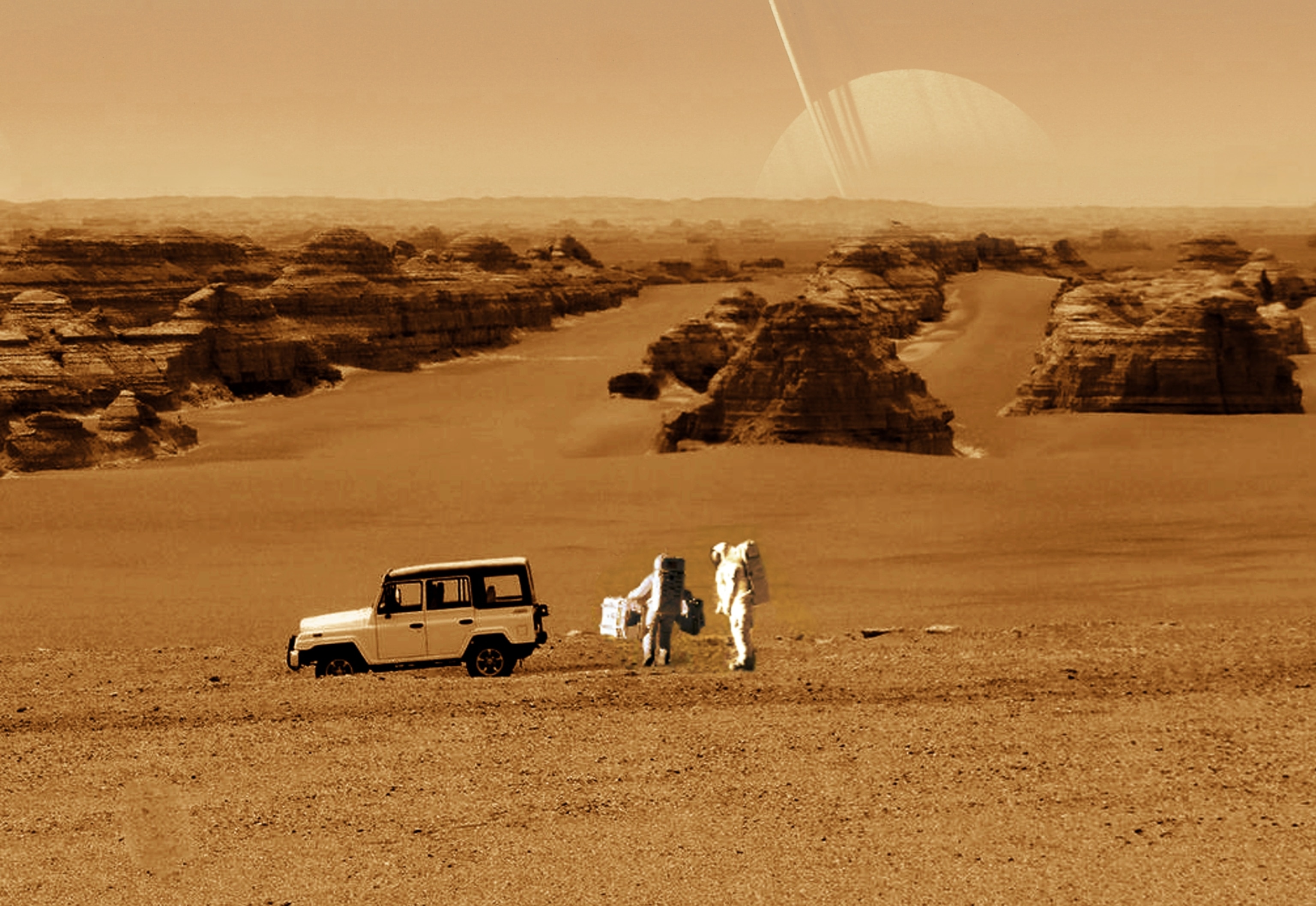
A Vanishing Island, an Alien Mudball, and the Search for Life on Enceladus
Last week, the Lunar and Planetary Science Conference brought more than 1,700 scientists to The Woodlands, Texas. Through presentations and poster sessions, many of the solar system’s worlds briefly had a chance to shine — even the little ones, like comet 67P/Churyumov-Gerasimenko, dwarf planet Ceres, and all those icy moons in the outer solar system. We’ve already reported the latest results from Mercury, speculation about icy plumes on Ceres, mysterious happenings in the Martian atmosphere, and a newly discovered, concealed crater on the moon’s nearside. There are a few more stories on the way. For now, here’s a small selection of the many interesting things I happened across while vicariously traveling through the solar system. — Nadia
Searching for Life on Enceladus

Small and lively, Saturn’s moon Enceladus is one of the prime targets in the search for extraterrestrial life. Its icy crust hides a subsurface ocean that erupts into space via fractures in the moon’s south pole that continually spit salty water into space. Ever since NASA’s Cassini spacecraft spotted the geysers in 2005, scientists have discussed the possibility of flying a spacecraft through them and searching for signs of life. Now, one of the space missions entered in NASA’s Discovery Program competition aims to do just that. As described by Cornell University’s Jonathan Lunine during a poster session on March 17, the Enceladus Life Finder (ELF) would fly through the Enceladian plume and collect some of the water coming out (“If Enceladus has life, we will find it,” the poster said). Instruments aboard the solar-powered spacecraft would look for life’s signatures in the alien water by studying the ratios of amino acids, searching for bias in the number of carbon atoms in fatty acids, and determining whether chemical isotopes line up with known biological processes.
“Flying through the plume and collecting material is exactly what Cassini has done multiple times to get data on the composition,” Lunine says. “That makes ELF a very low risk and high reliability science mission.”
ELF is one of 28 proposals entered in the Discovery program competition, open to missions costing $450 million or less. NASA will select between three and five candidates for more serious consideration this fall, and eventually choose one winner.
Alien Landforms on an Alien Moon
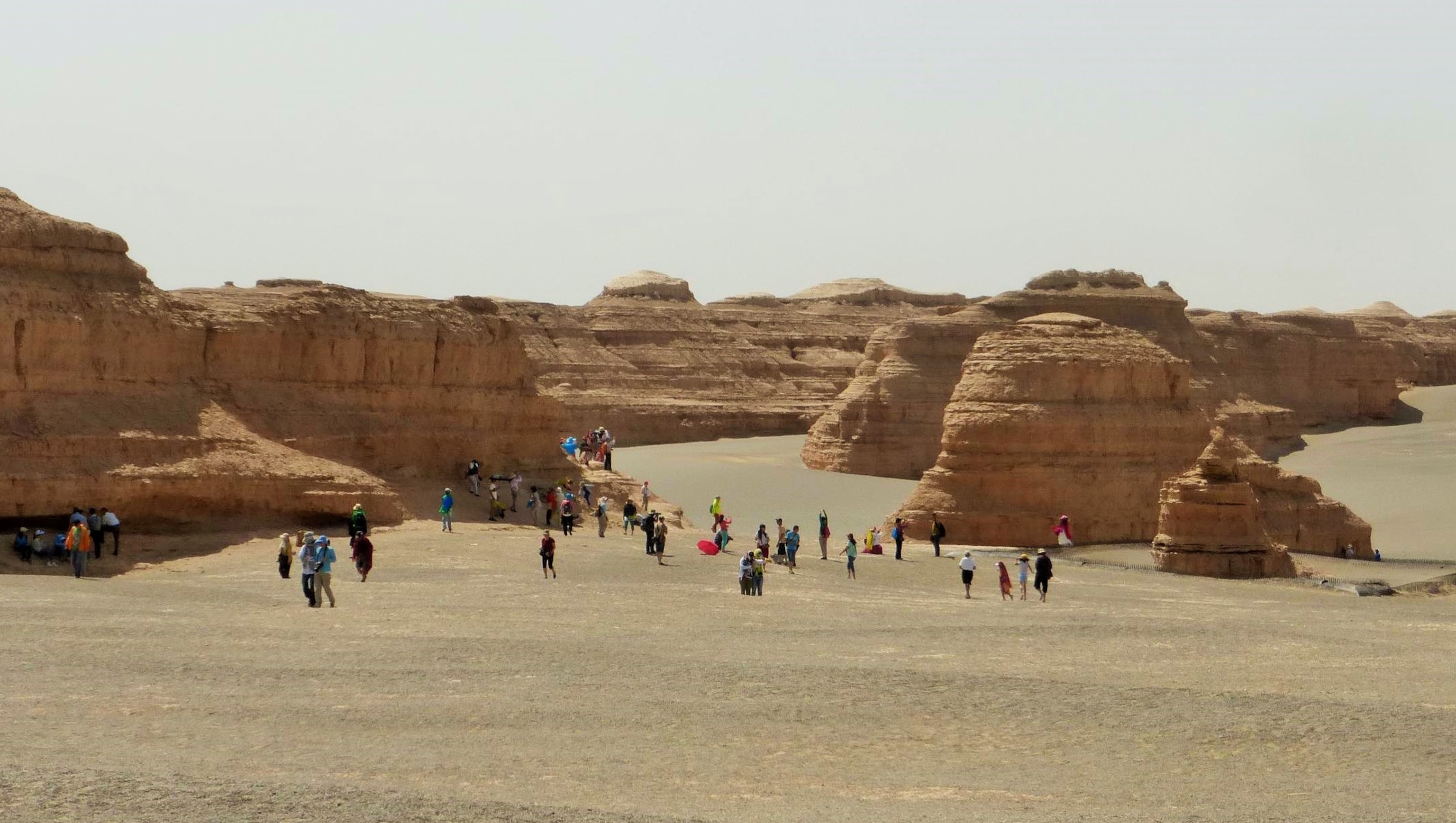
Titan, Saturn’s largest moon, has a surface that’s surprisingly Earth-like in many respects (except that where water falls and flows on Earth, liquid hydrocarbons fall and flow on Titan). There are rivers and seas, deserts, dunes, and yardangs. Wait – yardangs? On Earth, yardangs are exotic-looking features sculpted by wind-driven erosion. The deserts of Africa, the Middle East, Asia and South America are all home to alien-looking yardangs, fields of which can stretch for 100 kilometers. Now, Jani Radebaugh of Brigham Young University and her colleagues think they’ve spotted yardangs on Titan’s northern hemisphere in images taken by NASA’s Cassini spacecraft. The features are crisscrossed by river channels and are near an area that looks as though it may have been an ancient lakebed, perhaps suggesting a wetter past on the moon. Intriguingly, they’re also near a patch of domes that could be erupting cryolavas onto Titan’s surface. If the features are yardangs, Radebaugh says, they point to strong, persistent winds on Titan’s surface, as well as the presence of volcanic ash or soft, liquid-deposited clays. “They’re ephemeral,” says Radebaugh, who presented the data March 19. “Yardangs might tell us a little bit more about climate and about changing conditions – what is allowing them to persist?”
When Worlds Collide, Sometimes You Get a Mudball
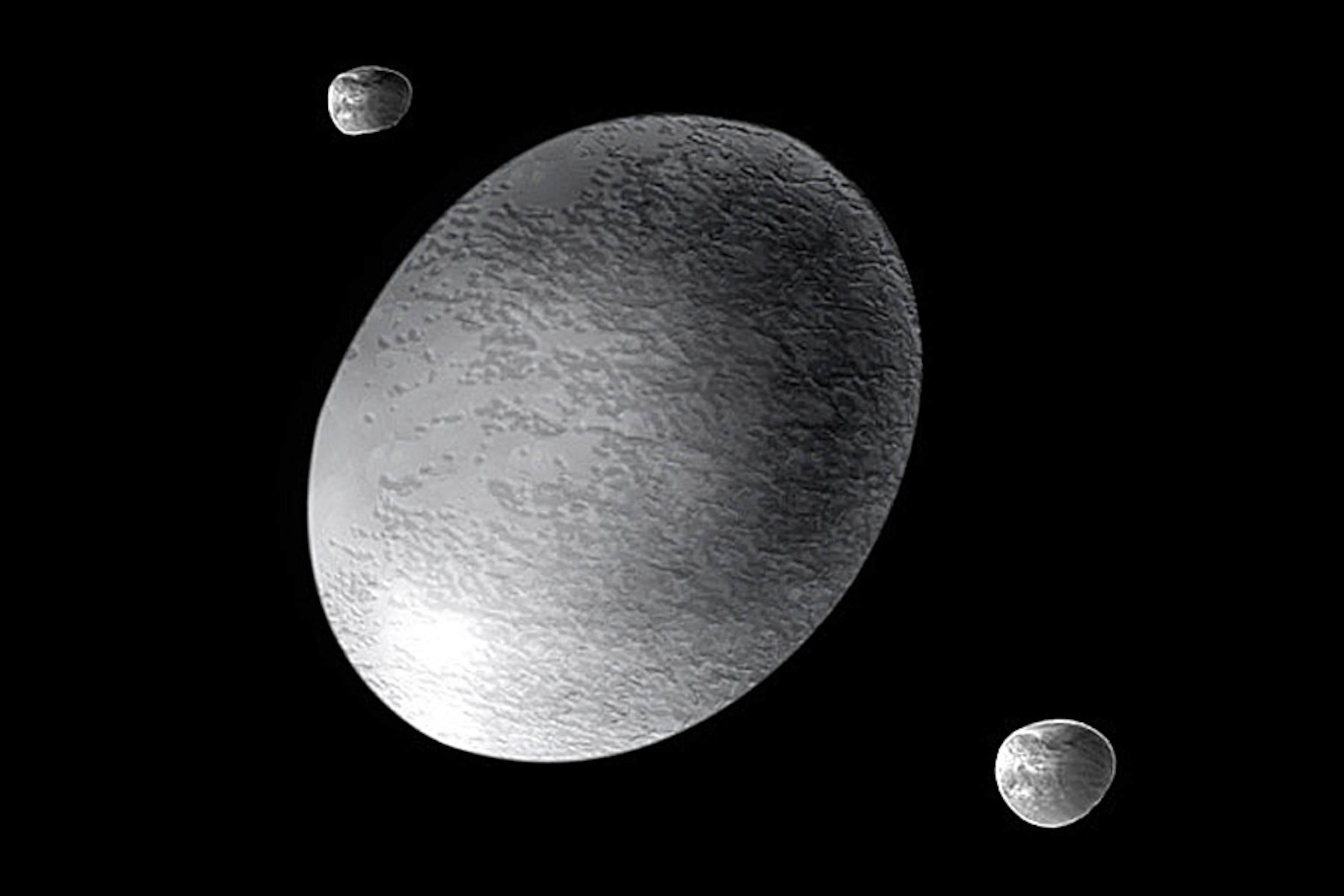
Spinning like a furious egg-shaped top, dwarf planet Haumea is one of the solar system’s most rapidly rotating large bodies. It’s parked out in the Kuiper Belt, beyond Pluto, and orbits an average distance of 6.4 billion kilometers from the sun. It has two little moons, which scientists have used to determine that 1,400-kilometer wide Haumea is mostly rock, despite having a surface covered in pure, crystalline water ice.
Scientists think the solar system’s egg may have been cooked during a slow-motion collision between two 1,300-kilometer wide bodies. But rather than being completely obliterated, the cores of the two colliders congealed, Arizona State University’s Steve Desch described on March 17. As those cores merged, their outer layers were flung into space, leaving just a thin rind of ice on newborn Haumea’s surface. Inside, though, something different was happening. Warm temperatures helped water seep deep into the interior, driving what’s known as “mudball convection” and turning Haumea into something like a massive, sludge-filled Cadbury egg.
Volcanism in Valles Marineris?
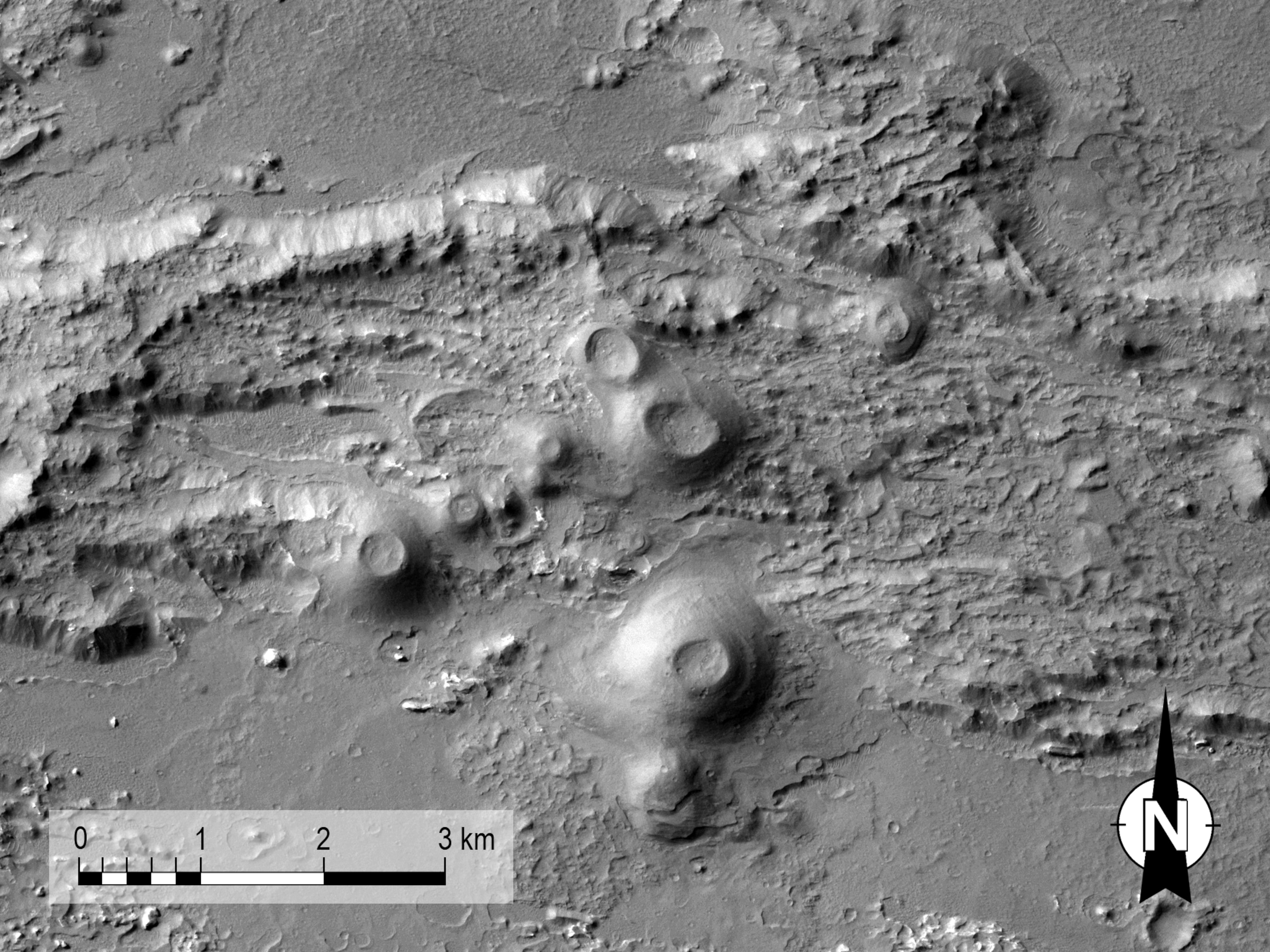
Raked across the Martian equatorial plains is a giant canyon network known as Valles Marineris. It’s more than 4,000 kilometers long and can be more than 7 kilometers deep – in other words, it dwarfs the Grand Canyon. Now, after studying images shot from Mars orbit, scientists think they’ve spotted a population of relatively young, pitted volcanic cones at the bottom of the canyon, in a section known as Coprates Chasma.
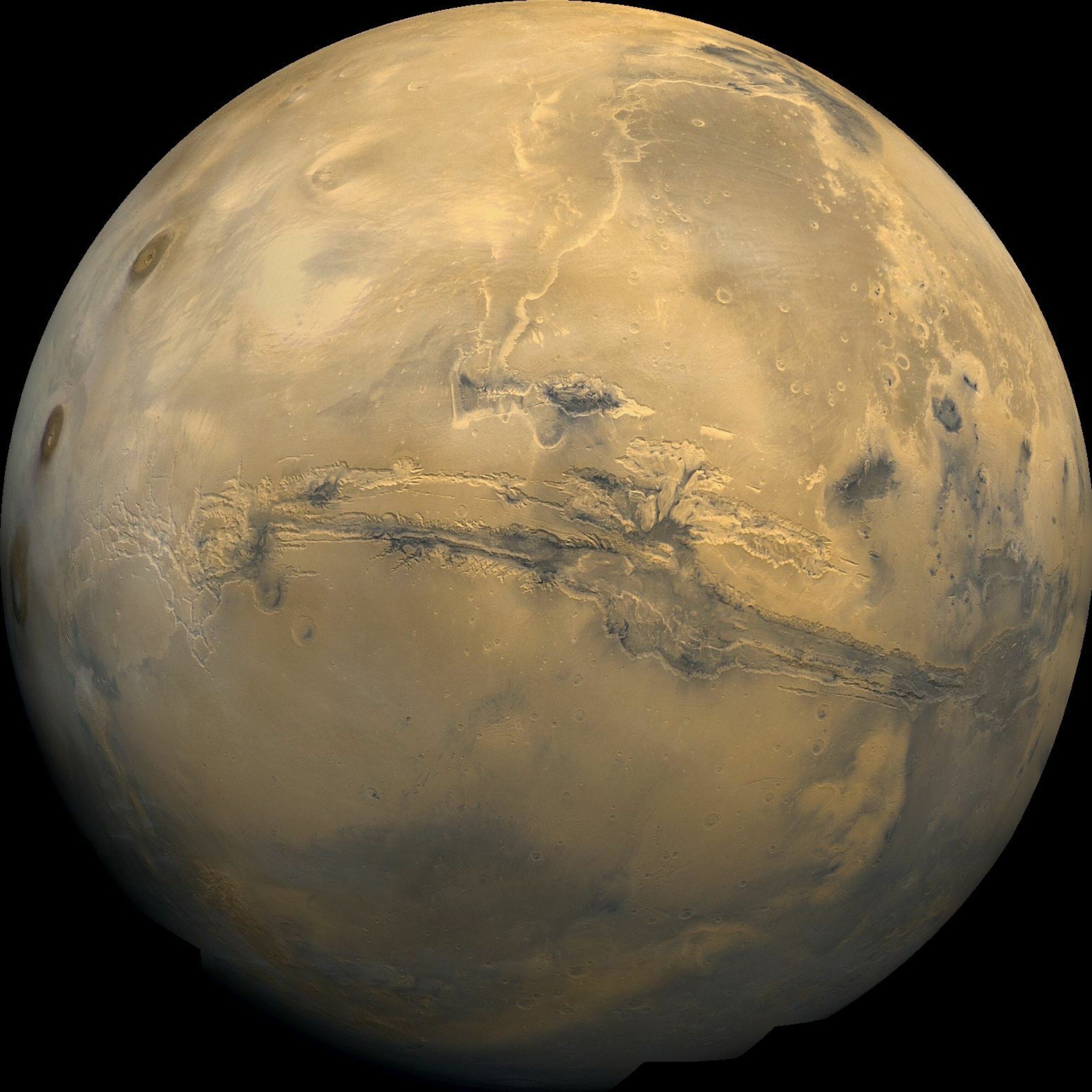
There are more than 100 of these cones, many of which have summit craters from which lava could have flowed. And, the area surrounding the cones is covered in textures resembling lava flows, says Ernst Hauber, of Germany’s Institute for Planetary Research, who described the newly identified volcanic cones on March 19. Hauber and his colleagues compared the cones on Mars to similar cones on Earth, and ruled out steam vents, erosion, and other non-volcanic origins. Hauber says the find is not necessarily surprising, as volcanism is thought to be one of the processes that helped build Valles Marineris, but that the observations provide some of the strongest evidence so far for the idea. Confirming the cones’ volcanic nature could be done using orbiting spacecraft to make better maps of Coprates Chasma and observe the minerals in the area, but “the best way would be to send a rover,” Hauber says.
Now You See It, Now You Don’t

Titan’s Magic Island has vanished. The strange feature first appeared in Cassini spacecraft target=” blank” images of Ligeia Mare, the second-largest sea on the Saturnian moon, in summer 2013. An unexpected apparition, the “island” appeared to be floating just offshore, near a convoluted patch of shoreline. But in images taken in October, the island was gone. It reappeared in August 2014, in the same spot and looking vaguely similar. By then, scientists had also seen another “magic island” in Kraken Mare, Titan’s largest sea. Yet in January of this year, Ligeia’s Magic Island had disappeared again. Scientists aren’t sure what the island really is, but they don’t think it’s a submerged landmass exposed by fluctuating sea levels. Instead, the team’s best guesses are that the Magic Island is either waves on the sea surface, a collection of floating, solid materials, or radar-reflective bubbles. What is clear is that Titan’s surface is full of action.
“These really are transient, dynamic phenomena that are occurring in the seas,” says Cornell University’s Jason Hofgartner, who provided a Magic Island update on March 20.
